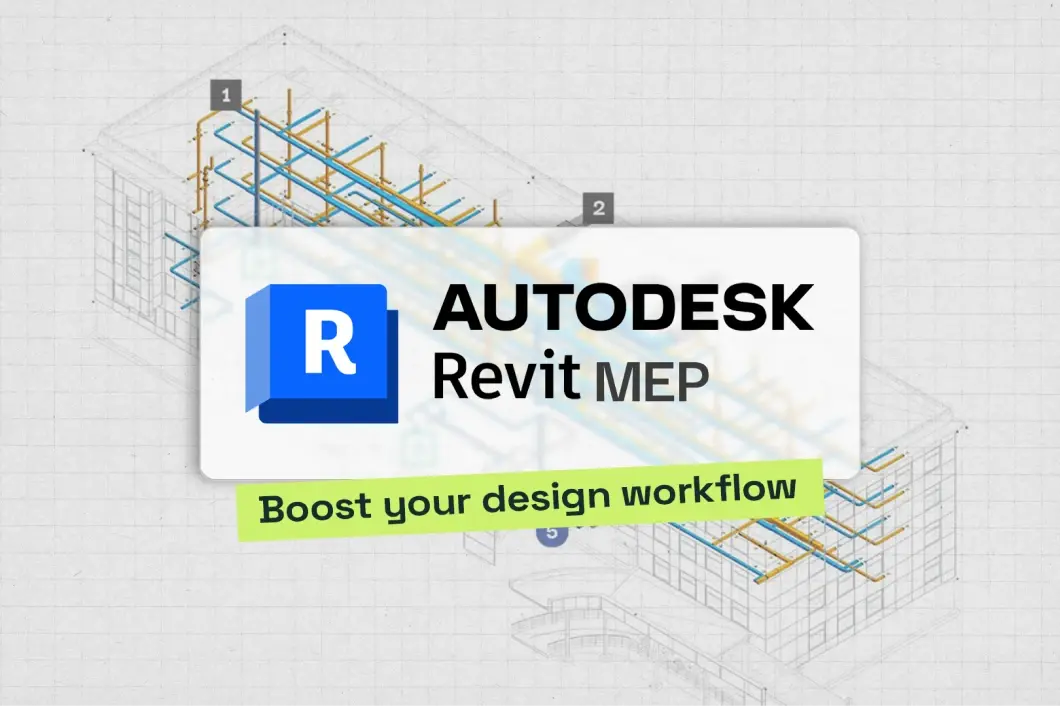
Modern construction increasingly relies on digital platforms to manage complex building systems. Engineers proficient in specialized tools can model designs accurately and coordinate mechanical, electrical, and plumbing systems seamlessly. Understanding what MEP is in construction ensures integration across all disciplines, supporting reliable project outcomes. Senior MEP engineers in the USA earn an average of $126,557 per year, reflecting the expertise these tools demand.
Selecting the right platform begins with evaluating software for design, analysis, and documentation. By carefully conducting a comparison of top MEP design tools, engineers can identify each option’s strengths and limitations. Applying these tools effectively reduces errors, streamlines workflows, and boosts project efficiency.
Why Is Mastering the Right Software Crucial for MEP Engineers in 2025
MEP engineers handle complex building systems where precision and coordination are essential. Mastering modern software allows them to simulate designs accurately and integrate multiple disciplines seamlessly. Using BIM coordination tools for MEP projects ensures clashes are detected early, workflows are streamlined, and project timelines remain consistent, supporting efficient and error-free construction outcomes.
Adopting advanced platforms helps engineers manage increasing project complexity while maintaining quality standards. Understanding what is MEP engineering within these systems allows professionals to plan, analyze, and execute designs with confidence. Skilled use of software enhances collaboration, minimizes rework, and ensures that all mechanical, electrical, and plumbing systems function together reliably throughout the project lifecycle.
What are the Top MEP Software Every MEP Professional Should Learn?

MEP professionals use the MEP design tools to handle mechanical, electrical, and plumbing systems efficiently. These software platforms support design, modeling, and analysis, helping engineers coordinate projects effectively while ensuring accurate planning and reliable outcomes throughout each stage of construction.
Here are the top MEP software tools every professional should learn:
1. Autodesk Revit MEP
Features:
- Revit MEP software offers parametric 3D modeling for HVAC, electrical, and plumbing systems.
- Provides real-time collaboration through cloud-based worksharing.
- Integrates with Dynamo for visual programing and automation.
- Supports energy analysis and simulation for sustainable design.
Purpose: Revit MEP enables the creation of intelligent 3D models for MEP systems, enhancing coordination and reducing errors throughout the design and construction process.
2. Navisworks Manage
Features:
- Aggregates models from various sources into a single environment.
- Performs clash detection to identify and resolve conflicts early.
- Conducts 4D simulations to visualize construction sequences.
- Facilitates real-time project coordination across teams.
Purpose: Navisworks Manage improves project coordination by combining models, enabling clash detection and construction simulation for smoother workflows.
3. Autodesk Construction Cloud
Features:
- Centralizes project data for easy access and management.
- Streamlines document control with version tracking.
- Facilitates real-time communication among project teams.
- Integrates with other Autodesk tools for seamless workflows.
Purpose: Autodesk Construction Cloud connects project teams and data in a common platform, improving collaboration and efficiency throughout the project lifecycle.
4. Plannerly
Features:
- Automates BIM execution planning with AI-driven workflows.
- Aligns with ISO 19650 standards for BIM management.
- Provides visual project databases for easy tracking.
- Integrates model checking and compliance verification.
Purpose: Plannerly automates BIM planning, ensures international standards compliance, and enhances project delivery efficiency and quality.
Also Read: Top 50 MEP Interview Questions & Answers 2025
5. Dynamo for Revit
Features:
- Provides a visual programing interface for automation.
- Allows customization of Revit workflows and parameters.
- Enables batch processing of tasks to save time.
- Integrates with various data sources for dynamic modeling.
Purpose: Dynamo extends Revit by automating tasks, creating custom parametric designs, and improving workflow efficiency and flexibility.
6. COBie (Construction Operations Building Information Exchange)
Features:
- Standardizes data for facility management and operations.
- Facilitates data exchange between design and construction teams.
- Supports asset tracking and maintenance scheduling.
- Integrates with BIM models for accurate data transfer.
Purpose: COBie standardizes building information capture and exchange, providing facility managers accurate data for operations and maintenance throughout the lifecycle.
7. Trimble SysQue
Features:
- Offers fabrication-ready MEP content within Revit.
- Provides real-world, manufacturer-specific data.
- Supports detailed modeling for accurate fabrication.
- Integrates with Trimble's construction management tools.
Purpose: SysQue empowers MEP professionals to create detailed, constructible models that incorporate real-world manufacturer content, streamlining the transition from design to fabrication.
8. Solibri Model Checker
Features:
- Automates model checking for compliance and quality assurance.
- Validates materials, dimensions, and annotations.
- Supports rule-based validation for design intent.
- Integrates with BIM workflows for seamless coordination.
Purpose: Solibri ensures that BIM models comply with project requirements and standards, improving quality control and reducing errors before construction.
Also Read: BIM for MEP: A Complete Guide 2025
9. MagiCAD
Features:
- Provides comprehensive tools for designing HVAC, piping, and electrical systems.
- Integrates with Revit and AutoCAD for seamless BIM workflows.
- Offers real-time calculations for pressure, flow, and ventilation systems.
- Includes large manufacturer-specific content libraries for accurate design.
Purpose: MagiCAD helps engineers validate system designs, optimize layouts, and ensure compliance with building standards, supporting smoother project delivery.
10. AutoCAD MEP
Features:
- Provides specialized tools for MEP design within AutoCAD.
- Automates drafting and documentation tasks.
- Offers parametric component libraries for quick placement.
- AutoCAD MEP software integrates with other Autodesk tools for comprehensive workflows.
Purpose: AutoCAD MEP offers tools tailored for MEP design, enabling professionals to create accurate and detailed drawings while ensuring compatibility with other AutoCAD-based workflows.
What Factors Should Professionals Consider When Choosing MEP Software?
When assessing various MEP platforms, it is crucial to examine how the tools facilitate system planning, integration, and workflow management, while ensuring they meet the duties of an MEP engineer for precise and efficient project delivery.
Key Factors to Consider:
-
3D Modeling Capabilities: Ensure the tool includes robust 3D MEP software features for precise system visualization.
-
Integration: Verify compatibility with BIM platforms and other design applications to streamline workflows.
-
Collaboration: Assess real-time coordination, cloud access, and team communication features for multi-discipline projects.
-
Usability and Support: Consider intuitive interfaces, available training, and vendor support to reduce learning time and minimize errors.
How Do These Software Tools Improve Efficiency and Accuracy in MEP Projects?

Modern MEP design software streamlines workflows and supports teams in delivering projects more efficiently. By integrating tools for collaboration, visualization, and verification, engineers can manage complex building systems with greater confidence and fewer delays.
Key ways they improve efficiency and accuracy include:
- Preventing errors with automated design checks and standardized processes.
- Allowing teams to share updates and resolve issues instantly through real-time collaboration.
- Supporting MEP jobs by organizing system layouts and clarifying responsibilities.
- Providing simulations and modeling to validate performance before implementation.
- Keeping all project information centralized to reduce rework and maintain consistency.
Which Online Courses or Training Programs Teach These MEP Software Tools?
Novatr provides structured training programs like the BIM Course for MEP Engineers, helping learners understand the roles of an MEP engineer in construction. The course focuses on hands-on use of MEP software, workflow integration, and project coordination, giving professionals practical skills for complex building systems.
Novatr & Its USPs in Teaching the Software:
-
Offers step-by-step modules aligned with current industry standards.
-
Provides practical exercises using real-world MEP projects for applied learning.
-
Includes focused guidance on BIM for MEP engineers, connecting theory to software.
-
Tracks learner progress with mentorship and feedback for effective skill application.
Conclusion
Selecting and mastering the right MEP platforms allows engineers to manage complex building systems with precision and efficiency. Structured training, such as the BIM Course for MEP Engineers offered by Novatr, provides practical exposure to real-world workflows and software applications. Visit our resource page to explore these learning opportunities and enhance skills using advanced MEP 3D modeling software, ensuring accurate project execution and seamless integration across disciplines.
Was this content helpful to you



.jpg)



